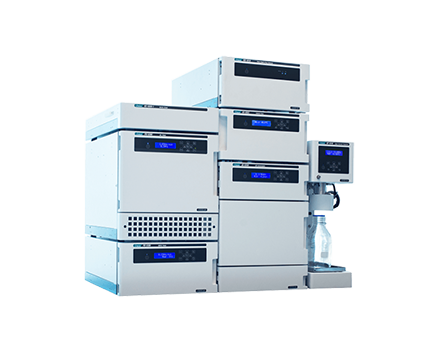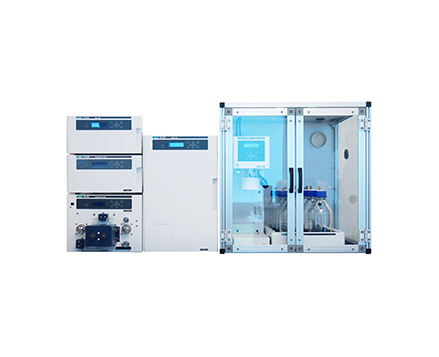Evaluation of the SFC-FID for the Olefin Analysis ASTM D6550 Method
January 5, 2024
Introduction
SFC has been well established for gasoline and diesel fuel analysis, using the ASTM D5186 and D6550 methods. Both ASTM methods require a silica column for the separation, while D6550 requires the use of an additional silver column for retention of the olefins. In previous application notes a variety of silica columns were evaluated at various temperatures and back pressures. The best column and operating conditions were used to evaluate our SFC-FID ability to meet the specifications of the ASTM D6550 method.
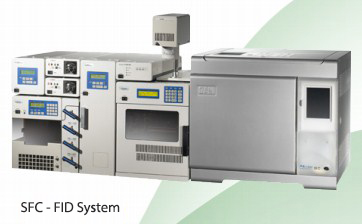
Experimental
Equipment
| CO2 Delivery Pump: | PU-2080-CO2 |
| Autosampler: | XLC-3159AS |
| Column oven: | CO-2060 |
| Fid | DANI Oven-FID |
| Back Pressure Regulator: | BP-2080 |
Conditions
| Injection Vol.: | 0.5µL |
| Silica Column: | JASCO Silica 4.6x250mm, 5µm x2 |
| Silver Column: | JASCO Silver 4.6x50mm, 5µm |
| CO2 Flow rate: | 3.0 mL/min |
| Column temp.: | 35ºC |
| Back Pressure: | 100 bar |
| FID Splitter: | 200ºC |
| FID Detector: | 350ºC |
The standards were purchased from Spectrum Quality Standards and consisted of individual ampules of 1.0%, 3.5%, 6.0%, 8.5%, 12.0%, 17.0% and 25.0% olefin in a mixture of 75% isooctane : 25% toluene.
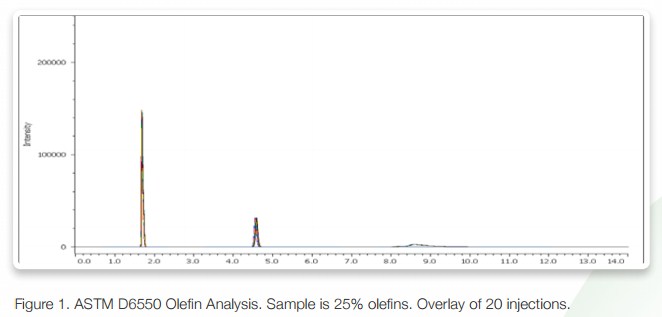
The overlay of 20 chromatograms of the 25% olefin sample is shown in Figure 1. The zoomed olefin overlay of those 20 injections is shown in Figure 2. The overlay of the olefin peak of the various standards, 1.0%, 3.5%, 6.0%, 8.5%, 12.0%, 17.0% and 25%, is shown in figure 8 and the corresponding calibration curve from those standards is also shown. The linearity of the calibration curve had a correlation coefficient (R) of 0.997.
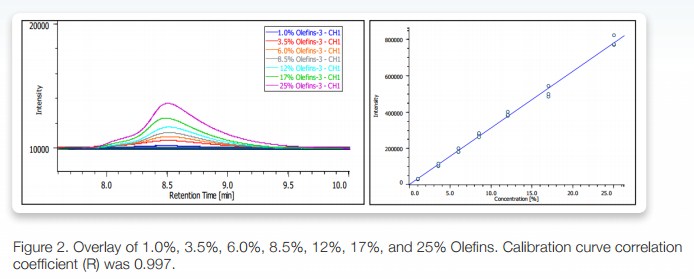
The overlay 20 injections of 3.5% and 12% olefins with the zoom of just the olefin is shown in Figure 3. Excellent retention time reproducibility (%RSD) was achieved of 0.092 for 3.5% and 0.143 for 12.0%.

Figure 3. Overlay of 3.5% (left) and 12% (right) Olefins. Retention time RSD of 0.092 and 0.143 for 3.5% and 12.0%, respectively.
The ASTM method requires repeatability testing on one system by one user and reproducibility testingon a different system by a different user. The repeatability is defined by the equation, repeatability = 0.11 X0.75 and the reproducibility is defined by the equation, reproducibility = 0.47 X0.75, where in each X is between 1 and 25% mass % olefin. The tables below show the acceptable and measured repeatability and reproducibility for the entire olefin range.
Table 1. ASTM D6550 Repeatability. Acceptance is determined for each % of olefin using the equation, repeatability = 0.11 X0.75, and the measured is calculated from the 20 injections of each olefin standards.
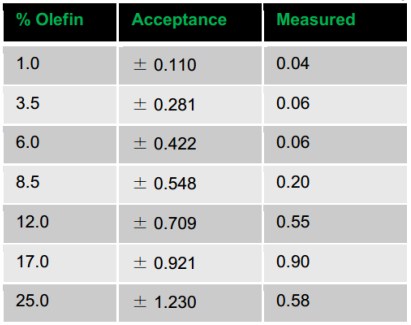
Table 2. ASTM D6550 Reproducibility. Acceptance is determined for each % of olefin using the equation, reproducibility= 0.47 X0.75, and the measured is calculated from the 20 injections of each olefin standards.
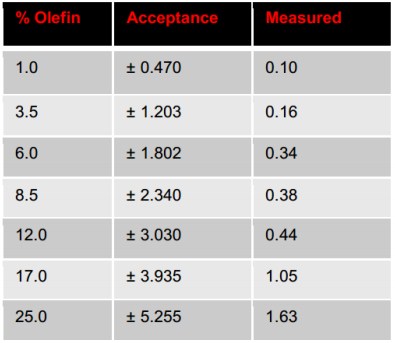
As the results show in the repeatability and reproducibility tables, the SFC-FID exceeds the requirements of the ASTM D6550. Having exceeded the acceptable values, the SFC-FID system can successfully be used for the automated analysis of olefins in gasoline.
Featured Products:

Evaluation of the SFC-FID for the Olefin Analysis ASTM D6550 Method
Introduction
SFC has been well established for gasoline and diesel fuel analysis, using the ASTM D5186 and D6550 methods. Both ASTM methods require a silica column for the separation, while D6550 requires the use of an additional silver column for retention of the olefins. In previous application notes a variety of silica columns were evaluated at various temperatures and back pressures. The best column and operating conditions were used to evaluate our SFC-FID ability to meet the specifications of the ASTM D6550 method.

Experimental
Equipment
| CO2 Delivery Pump: | PU-2080-CO2 |
| Autosampler: | XLC-3159AS |
| Column oven: | CO-2060 |
| Fid | DANI Oven-FID |
| Back Pressure Regulator: | BP-2080 |
Conditions
| Injection Vol.: | 0.5µL |
| Silica Column: | JASCO Silica 4.6x250mm, 5µm x2 |
| Silver Column: | JASCO Silver 4.6x50mm, 5µm |
| CO2 Flow rate: | 3.0 mL/min |
| Column temp.: | 35ºC |
| Back Pressure: | 100 bar |
| FID Splitter: | 200ºC |
| FID Detector: | 350ºC |
The standards were purchased from Spectrum Quality Standards and consisted of individual ampules of 1.0%, 3.5%, 6.0%, 8.5%, 12.0%, 17.0% and 25.0% olefin in a mixture of 75% isooctane : 25% toluene.

The overlay of 20 chromatograms of the 25% olefin sample is shown in Figure 1. The zoomed olefin overlay of those 20 injections is shown in Figure 2. The overlay of the olefin peak of the various standards, 1.0%, 3.5%, 6.0%, 8.5%, 12.0%, 17.0% and 25%, is shown in figure 8 and the corresponding calibration curve from those standards is also shown. The linearity of the calibration curve had a correlation coefficient (R) of 0.997.

The overlay 20 injections of 3.5% and 12% olefins with the zoom of just the olefin is shown in Figure 3. Excellent retention time reproducibility (%RSD) was achieved of 0.092 for 3.5% and 0.143 for 12.0%.

Figure 3. Overlay of 3.5% (left) and 12% (right) Olefins. Retention time RSD of 0.092 and 0.143 for 3.5% and 12.0%, respectively.
The ASTM method requires repeatability testing on one system by one user and reproducibility testingon a different system by a different user. The repeatability is defined by the equation, repeatability = 0.11 X0.75 and the reproducibility is defined by the equation, reproducibility = 0.47 X0.75, where in each X is between 1 and 25% mass % olefin. The tables below show the acceptable and measured repeatability and reproducibility for the entire olefin range.
Table 1. ASTM D6550 Repeatability. Acceptance is determined for each % of olefin using the equation, repeatability = 0.11 X0.75, and the measured is calculated from the 20 injections of each olefin standards.

Table 2. ASTM D6550 Reproducibility. Acceptance is determined for each % of olefin using the equation, reproducibility= 0.47 X0.75, and the measured is calculated from the 20 injections of each olefin standards.

As the results show in the repeatability and reproducibility tables, the SFC-FID exceeds the requirements of the ASTM D6550. Having exceeded the acceptable values, the SFC-FID system can successfully be used for the automated analysis of olefins in gasoline.

 Download This Application
Download This Application